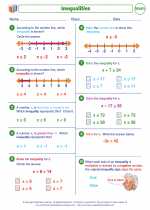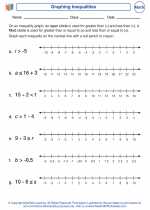Quartic Polynomial
A quartic polynomial is a polynomial of degree 4. It can be written in the general form:
f(x) = ax4 + bx3 + cx2 + dx + e
where a, b, c, d, and e are constants, and a ≠ 0.
Characteristics of a Quartic Polynomial
1. Degree: The degree of a quartic polynomial is 4.
2. Number of Roots: A quartic polynomial can have up to 4 complex roots, considering multiplicity.
3. Turning Points: A quartic polynomial can have up to 3 turning points.
4. End Behavior: The end behavior of a quartic polynomial is determined by the leading coefficient a. If a > 0, the right end goes up and the left end goes down. If a < 0, the right end goes down and the left end goes up.
Operations with Quartic Polynomials
1. Addition and Subtraction: To add or subtract two quartic polynomials, combine like terms with the same degree.
2. Multiplication: To multiply two quartic polynomials, use the distributive property and combine like terms to simplify the expression.
3. Division: Division of quartic polynomials follows the same principles as polynomial long division or synthetic division.
Graphing a Quartic Polynomial
To graph a quartic polynomial, follow these steps:
1. Find the x-intercepts by setting f(x) = 0 and solving for x. These are the roots of the polynomial.
2. Find the y-intercept by evaluating f(0).
3. Determine the end behavior based on the leading coefficient.
4. Find the axis of symmetry and any turning points using calculus methods if necessary.
5. Plot additional points if needed and sketch the graph accurately.
Study Guide
When studying quartic polynomials, it's important to focus on the following key areas:
1. Understanding the general form of a quartic polynomial and its characteristics.
2. Practicing operations with quartic polynomials, including addition, subtraction, multiplication, and division.
3. Graphing quartic polynomials and interpreting their behavior, including finding x-intercepts, y-intercepts, end behavior, axis of symmetry, and turning points.
4. Solving problems involving quartic polynomials, such as finding roots, determining the nature of roots, and solving real-life problems using quartic functions.
By mastering these aspects, you will develop a strong understanding of quartic polynomials and their applications in mathematics.
.◂Math Worksheets and Study Guides Seventh Grade. Equations and Inequalities

 Worksheet/Answer key
Worksheet/Answer key
 Worksheet/Answer key
Worksheet/Answer key
 Worksheet/Answer key
Worksheet/Answer key
 Worksheet/Answer key
Worksheet/Answer key
 Worksheet/Answer key
Worksheet/Answer key
 Worksheet/Answer key
Worksheet/Answer key
